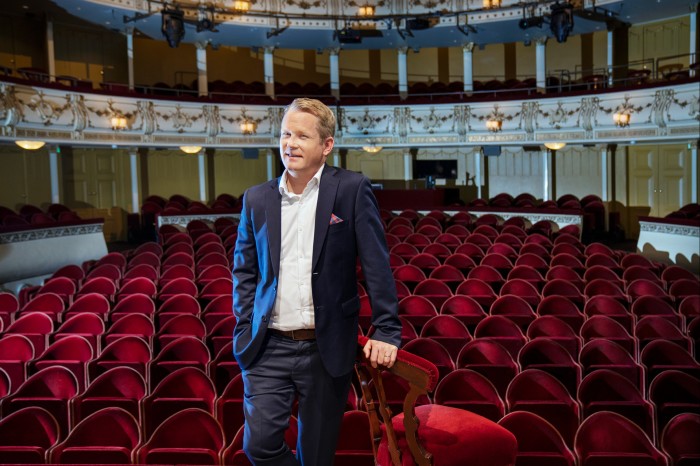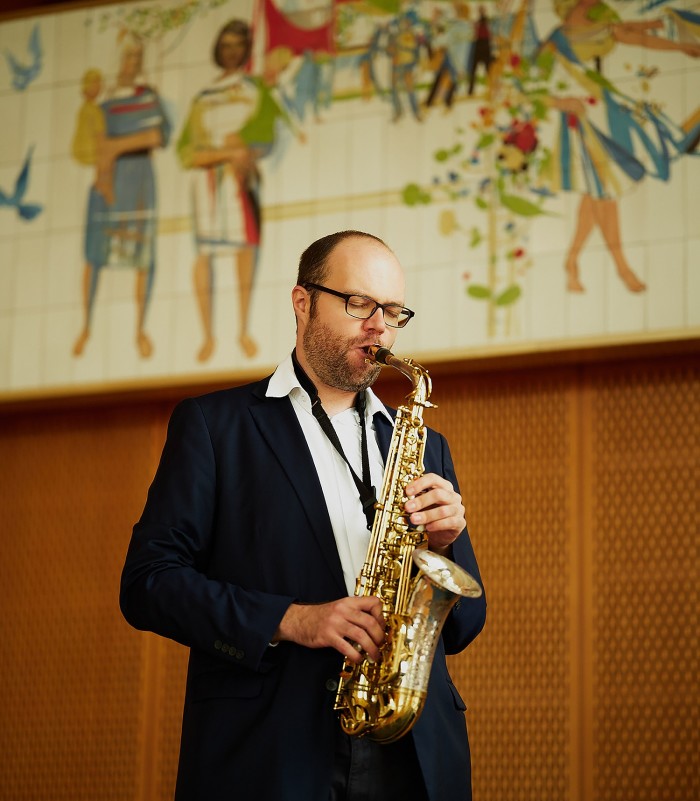Learning to take leadership roles in the arts

Roula Khalaf, Editor of the FT, selects her favourite stories in this weekly newsletter.
For 13 years, Joachim Thibblin was in a job he was not formally trained for. The artistic director at Svenska Teatern, Finland’s 155-year-old national theatre for Swedish-language performances, began managing theatres in 2006. Before that, he had been an actor and his only experience as a student was at drama school.
“Throughout my career I have been looking for different educational opportunities to help me in this [management] role, but mostly it has been learning by doing or picking up advice through networking,” he says.
Then, in 2019, he was accepted on to the Business of Culture, an eight-month course co-created by the executive education teams at Finland’s Aalto University, BI Norwegian Business School and the Nationalmuseum in Stockholm.
Much of the programme is taught in group discussions, similar to MBA classes, with modules in strategic relationships and leadership, as well one-on-one coaching. Students travel to classes at campuses in Copenhagen, Helsinki and Oslo. The part-time format was designed for professionals working for arts and cultural organisations across the Nordic and Baltic countries, so that they can practise what they have learnt between seminar sessions.
The programme could not have come at a better time for Thibblin, given the need for crisis management during the pandemic, which forced his theatre to close for long periods over the past two years. “It enabled me to take myself to the next level as a leader,” he says. “Crisis management was something very new to me, but I was learning how to develop myself as a leader through psychological skills, how to understand how I was perceived by colleagues and how to mentor them better.”
Designers of MBA programmes have long seen the arts as a useful teaching tool — for example, using performance classes to improve executives’ communication skills — but business schools have struggled to attract senior leaders from artistic institutions as students. The reason is often that arts managers feel their challenges are different to those faced by the investment bankers and management consultants who are the mainstay of MBA cohorts.
Some schools have made efforts to bring arts and business students together. In London, Imperial College Business School’s Entrepreneurial Journey programme matches MBA students with design students from the Royal College of Art to form start-up teams with skills in finance and product development.
“Diversity is important to us and this brings a cognitive diversity to these teams with the different skills of designers and MBA students,” says Markus Perkmann, professor of innovation and entrepreneurship at Imperial.
“We do have people from the arts on our MBA programme and it makes good sense for these people, whose previous education may have been an arts degree. However, there are not many who come from this background.”
Leadership courses designed for people in the arts, such as that developed by Aalto and BI, are springing up at other European business schools. This partly reflects the breadth of arts education around the continent, often in close proximity to the MBA providers.
Geneva Business School has launched an MBA programme in global fine art management, aimed at developing a new generation of collectors, dealers and artists. The 18-month course, announced in May, is designed to appeal to people with either an artistic or a business background, according to Sixtine Crutchfield-Tripet, programme manager. “Artists who have learnt the craft can now learn the trade,” she says. “Finance managers and lawyers will uncover a specialisation in their own industries that they never suspected.”
In July, EMLyon business school in France signed an agreement with nearby Saint-Etienne Higher School of Art and Design to develop joint programmes. Among the first is an exchange between design and business students.
“There are some great artists, but they do not know how to sell what they create,” says Annabel-Mauve Bonnefous, dean of programmes at EMLyon. “Also, business students can learn from design concepts to see how they can develop corporate strategies.”
Business school programmes aimed at people in the arts are an acknowledgment that they have particular needs in terms of management training that set them apart from conventional MBA applicants.
An early entrant to this market was ESCP business school, which launched its specialist masters in management of cultural and artistic activities 15 years ago, in partnership with Ca’ Foscari University of Venice. The full-time programme runs from September to the end of March, after which students complete an internship and a professional thesis. Between the two institutions, 650 people have graduated from the course.
Carole Bonnier, an ESCP professor who takes over as programme director in January, says: “The main challenge for our students is to understand the complexity of an artist’s personality to manage without killing creativity.”
Helen Sildna, who founded the agency Shiftworks to promote the arts in her homeland, Estonia, and created Tallinn Music Week, is another graduate of the Business of Culture programme run by the Nordic business schools. Since her only formal degree was in English language and literature from Tallinn University, Sildna decided she needed a business education qualification to support her move into entrepreneurship. “As a founder, it is taken for granted that you learn by doing but, at a certain point, I realised that I needed to be better equipped,” she says.
Sildna got as far as a pre-meeting for a cohort beginning an MBA at Estonia Business School, but rejected the idea because there were not enough people from her sector. “I understand that I was seen as an attractive addition to the group,” she says. “But, when I saw the group, I just felt that the other members would be having such dramatically different experiences to me that I would not benefit enough from being around them.”
However, the Business of Culture programme offered the diversity that Sildna found makes MBA class discussions about leadership fruitful. Students represented organisations that varied from publicly funded venues to creative start-ups like her own, she says.

Some business school professors have also discovered the teaching benefits of channelling their inner artist. Hannes Gurzki is executive education programme director at ESMT Berlin and a saxophonist, with a diploma from the UK’s Associated Board of the Royal Schools of Music. He combined the two disciplines by introducing jam sessions for the MBA intakes.
He is joined in the classroom by other musicians, playing pieces in different styles to illustrate how teams can work together. Students get involved through clapping the rhythms and other participation.
“We use jazz as a metaphor for leadership because it is about learning to listen to one another,” Gurzki says. “It is also fun. People don’t expect this to happen in a business school so it enables them to step out of their comfort zone and into a learning zone.”
Comments